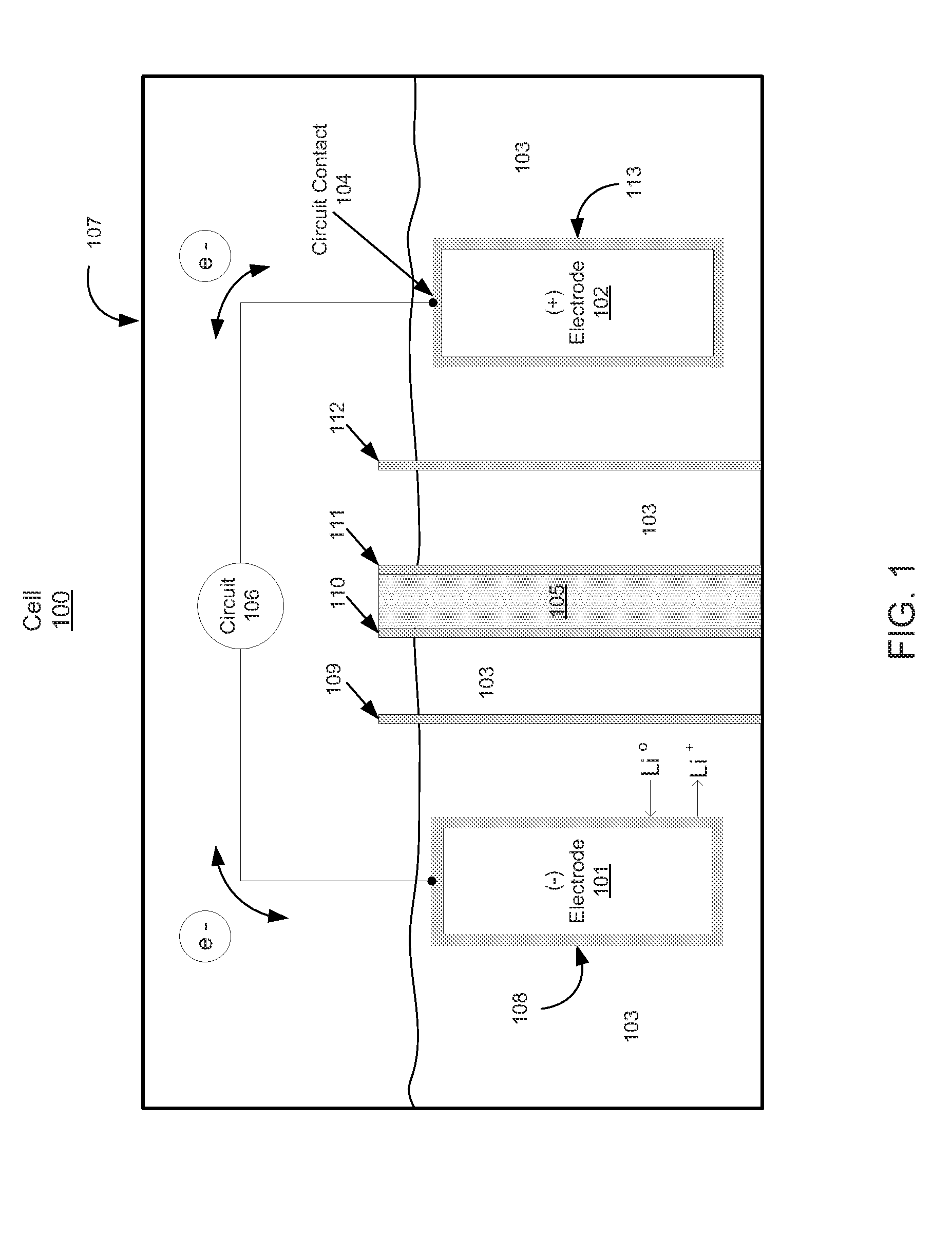Additives with ionomer articles, methods for making and methods for using
a technology of ionomer and additives, applied in the field of additives with ionomer articles, methods for making and using, can solve the problems of li—s cells and batteries, capacity degradation or capacity “fade”, sulfur loss from total electroactive sulfur in the cell, etc., and achieve high maximum discharge capacity, high coulombic efficiency, and high discharge ratio
- Summary
- Abstract
- Description
- Claims
- Application Information
AI Technical Summary
Benefits of technology
Problems solved by technology
Method used
Image
Examples
example 1
[0112 describes the preparation and electrochemical evaluation of a Li—S cell incorporating a halogen ionomer membrane which is a lithium exchanged derivative of a NAFION membrane. The electrolyte contains 0.1 M LiNO3. The lithium anode metal loading is 2.17 mg, which is equivalent to 8.38 mAh using a value of 3,861 mAh / g for lithium.
[0113]Preparation of C—S composite: Approximately 1.0 g of carbon powder (KETJENBLACK EC-600JD, Akzo Nobel) having a surface area of approximately 1,400 m2 / g BET (Product Data Sheet for KETJENBLACK EC-600JD, Akzo Nobel) and a pore volume of 4.07 cc / g (as measured by the BJH method) was placed in a 30 ml glass vial and loaded into an autoclave which was charged with approximately 100 grams of elemental sulfur (Sigma Aldrich 84683). The carbon powder was prevented from being in physical contact with the elemental sulfur but the carbon powder had access to sulfur vapor. The autoclave was closed, purged with nitrogen, and then heated to 340° C. for 24 hours...
PUM
| Property | Measurement | Unit |
|---|---|---|
| charge capacity | aaaaa | aaaaa |
| charge capacity | aaaaa | aaaaa |
| porosity | aaaaa | aaaaa |
Abstract
Description
Claims
Application Information
 Login to View More
Login to View More - R&D
- Intellectual Property
- Life Sciences
- Materials
- Tech Scout
- Unparalleled Data Quality
- Higher Quality Content
- 60% Fewer Hallucinations
Browse by: Latest US Patents, China's latest patents, Technical Efficacy Thesaurus, Application Domain, Technology Topic, Popular Technical Reports.
© 2025 PatSnap. All rights reserved.Legal|Privacy policy|Modern Slavery Act Transparency Statement|Sitemap|About US| Contact US: help@patsnap.com



